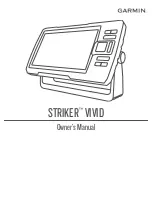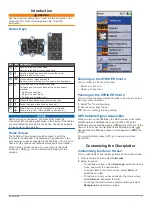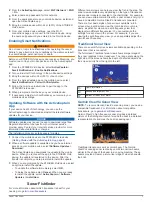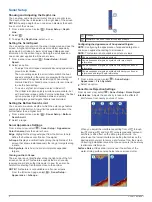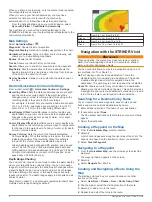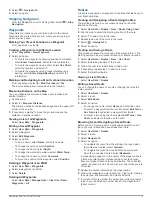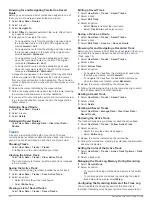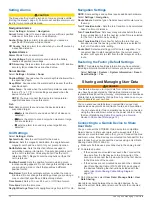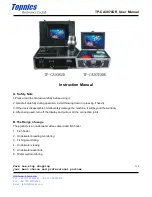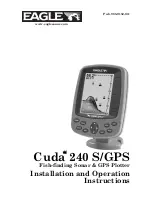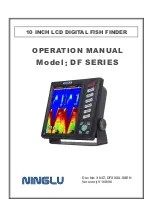
SideVü Sonar View
SideVü scanning sonar technology shows you a picture of what
lies to the sides of the boat. You can use this as a search tool to
find structures and fish.
Left side of the boat
Right side of the boat
The transducer on your vessel
Logs
Old tires
Trees
Water between the vessel and the bottom
Distance from the side of the boat
Split-Screen Frequency
You can view two frequencies from the split frequency screen.
Flasher
The flasher shows sonar information on a circular depth scale,
indicating what is beneath your boat. It is organized as a ring
that starts at the top and progresses clockwise. Depth is
indicated by the scale inside the ring. Sonar information flashes
on the ring when it is received at the depth indicated. The colors
indicate different strengths of the sonar return.
Select Flasher.
Depth at your present location
Depth scale
Split-Zoom View
On the split-zoom page, you can see a full-view graph of sonar
readings on the right side of the screen, and a magnified portion
of that graph on the left side of the screen.
From a sonar screen, select
>
Zoom
>
Split Zoom
.
Zoomed depth scale
Zoom window
Depth range
Selecting the Transducer Type
If you are connecting a transducer that was not included with the
device, you may need to set the transducer type to make the
sonar function properly. Before connecting the transducer, you
should select the transducer type. The transducer name should
be listed on the label on the transducer cable, near the
connector.
This device is compatible with a range of accessory transducers,
including Garmin ClearVü transducers, which are available at
.
1
Select
Settings
>
My Vessel
>
Transducer Type
.
2
Select an option:
• If you have a 200/77 kHz, dual-beam transducer, select
Dual Beam (200/77 kHz)
.
• If you have a 200/50 kHz, dual-frequency transducer,
select
Dual Frequency (200/50 kHz)
.
• If you have another type of transducer, select it from the
list.
Sonar Frequencies
NOTE:
The frequencies available depend on the chartplotter,
sounder modules, and transducer being used.
Adjusting the frequency helps adapt the sonar for your particular
goals and the present depth of the water.
Higher frequencies use narrow beam widths, and are better for
high-speed operation and rough sea conditions. Bottom
4
Sonar Fishfinder

